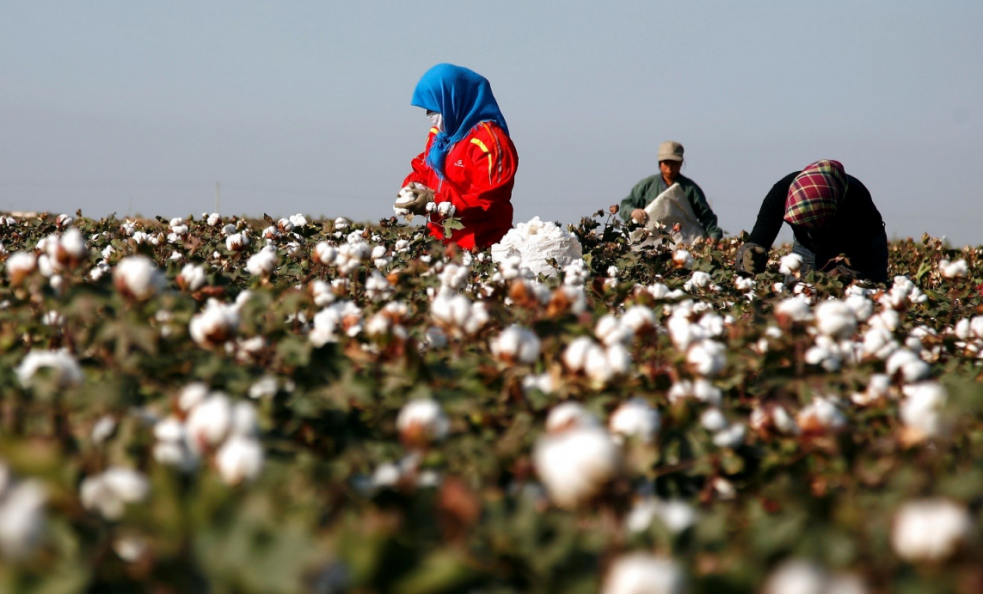Traces in shirts and T-shirts appear to contradict German firms’ promises to revise supply chains
Recent reports have suggested more than half a million people from minority ethnic groups such as the Uyghurs have been coerced into picking cotton in Xinjiang, which provides more than 80% of China’s and a fifth of the global production of cotton.
The US banned cotton imports from the autonomous region in north-west China last year, a move also debated in the European parliament but not enacted by the European Commission. Nonetheless, several large western clothes brands and fashion brands vowed to no longer use Xinjiang cotton in the light of the revelations.
Hugo Boss said that as of October 2021 its new collections “have been verified in line with our global standards again”, and that it “does not tolerate forced labour”. Puma stated in 2020 it had “no direct or indirect business relationship with any manufacturer in Xinjiang”, while Adidas said the same year it had no contractual relationship with any Xinjiang supplier but had instructed its fabric suppliers not to source yarn from the region in the wake of reports about human rights violations.
However, researchers at the Agroisolab in Jülich and the Hochschule Niederrhein University of Applied Sciences, both in western Germany, say an isotope analysis has found traces of Xinjiang cotton in Puma and Adidas T-shirts, shirts by Hugo Boss and the German outdoor wear brand Jack Wolfskin, and a pullover by the fashion company Tom Tailor.
“The isotopic fingerprints in the cotton are unambiguous and can be differentiated from cotton sourced from other countries and even other Chinese regions,” Markus Boner of Agroisolab told the German public broadcaster NDR’s investigative programme STRG_F.
Isotope analysis is usually used by archaeologists or forensic scientists to trace the geographic origin of organic or non-organic substances.
The five German clothes brands have been contacted by the Guardian for a response to the findings, which STRG_F said it would share with the companies.
Asked by STRG_F’s researchers in advance of publication whether they could rule out that Xinjiang cotton was used in their products, Adidas told the programme’s makers it exclusively sourced cotton from other countries, while Puma said: “On the basis of all of the collated information we have obtained, as well as tracing and controls we have established, we can say that our products don’t use cotton from Xinjiang.”
Hugo Boss said it did not tolerate forced labour in its supply chains but would not comment further on whether it could rule out the use of Xinjiang cotton in its supply chains.
Jack Wolfskin did not directly answer a question about the use of Xinjiang cotton in its supply chain but said its cotton was certified. Tom Tailor did not reply to queries from the programme.
Speaking anonymously, one auditor investigating Chinese subcontractors told STRG_F it was practically impossible for western companies to thoroughly shed a light on their own supply chains as their access in China was restricted by the communist government of Xi Jinping.
“It is theoretically possible but highly unlikely that western businesses can say with certainty that there is no forced labour in their cotton supply chains in Xinjiang,” the auditor said.


